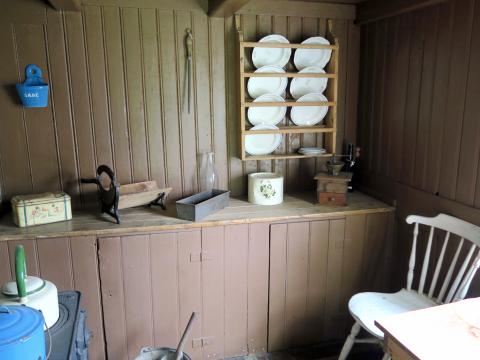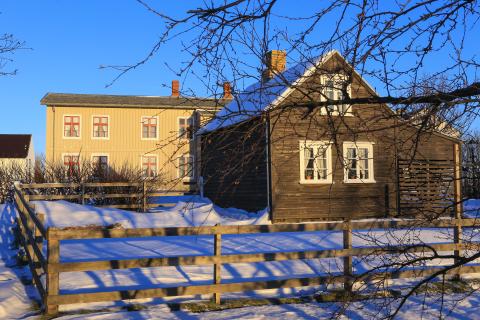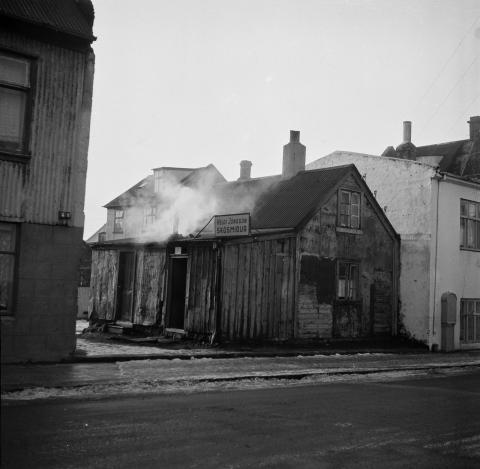
Efstibær was built in 1883 on land that later became Spítalastígur 4a. The house is a half-timbered construction filled with rocks between the wooden frames. Eiríkur Magnússon, a labourer, built the house and gave it the name Efstibær, because, at the time, it was the highest and easternmost house in Þingholt. Efstibær was mostly home to labourers, fishermen, workmen and their families. The building was moved to the Árbær Open Air Museum in 1967.


Efstibær - Spítalastígur 4a
The most populous class in 19th century Reykjavík was the working class. They fished in open boats and did day labour but had few or no domestic animals. One of those men was Eiríkur Magnússon. He built a house in 1883 for him and his family on a plot that would later become Spítalastígur 4a. He named it Efstibær – Uppermost House – but it was both the uppermost and the furthest to the east in Þingholt at the time. A turf house with the same name had stood on the plot before, and the new house looked like the old house; that is, it only had windows on the gables.
Efstibær is a half-timbered house; the framework is filled with stone and faced with horizontal plants. The roof is set on walls that rise about 60cm from the attic floor. Attached to the house is a lattice-work shed which was formerly a room. The original roof was probably corrugated iron, but the present one is shingled. There was a low cellar under the house where the occupants kept chickens. An outhouse was close to the front door, but its door turned away from the house.
Efstibær was usually occupied by labourers or seamen. There were sometimes two families living there, one on each floor. In the 1920s, the lower floor was occupied by a couple with eight children. The wife, Kristín Eiríksdóttir, was the daughter of the man who built the house, and her husband was a seaman. Beds stood all along the living-room walls, while foldaway beds were set in the middle of the floor at nights. The old man Eiríkur occupied the room, which is now a lattice-work shed. The house was moved to Árbær Open Air Museum in 1967 and now provides an example of labourers' homes.

